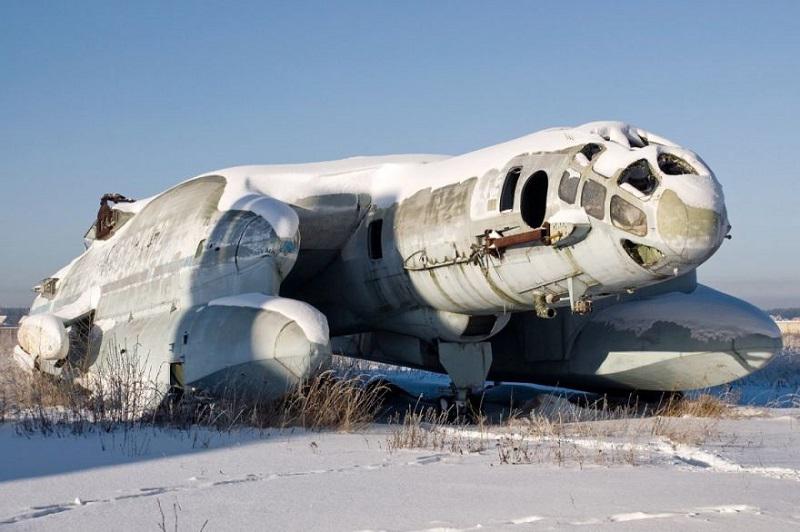Hi there Steemians!
We're back with another engineering wonder from USSR, this time it's one of the weirdest planes they've ever made.
Around 1970's USSR Army desired a new plane, which could track and destroy USA's submarines. In Result, USSR was offered with Bartini Beriev VVA-14 Vertikal' no-Vzletayuschaya Amphibia. This plane had to be able to land on conventional runways and anywhere else, where USSR Army would see it necessary, as well on water! The manufacturers also promised that the plane will be able to make Vertical landing and lifting, just like helicopters.

The 3 Stage Development
USSR engineers expected to develop this plane in 3 Stages.
In the First stage it was planned to develop and test the VVA-14's aerodynamic properties, as well as maneuvering abilities and most importantly - it's ability to land on water.
It meant that, in order for water reservoirs to change into nature created runways, this plane had to have inflatable pontoons right underneath the wing central zone, giving the ability for it to land on water.

In the Second stage, VVA-14M2 was supposed to receive additional engines under the fuselage, this way increasing the plane's power and shortening the needed runway length. As well in this stage it was intended to develop and to realize VVA-14's ability to vertically land and lift up.

In the Third and Final Stage, it was planned to develop a valid prototype for the army, with which it would be possible to all the manouvers and abilities promised before. As well as this plane was expected to be equipped with Burevestnik computerized anti-submarine war system, Bor-1 MAD(Magnetic Anomaly Detector) and many other systems, which would help VVA-14 discover enemy submarines.

The Unsuccessful Ending
Though, USSR engineers did not reach their estimated goals, the first test flight done by this plane was in 1972, 4th September, lifting from conventional runway. The first water reservoir lifting and landing flight tests were done only in June of 1975.

This plane wasn't left by pontoon problems either, which was an essential factor, so the plane could successfully land on water and float above it. Though, they had to inflate when the plane was about to land, but it never happened. That was replace with pontoons that are permanently inflated, although they weren't the most durable. The developers didn't realize the technology which promised the plane would land and lift up vertically as well.

In result, there were only 2 prototypes developed, who together flew 107 flights and spent 103 hours in the air. After the death of Bartini, this project had lost all of it's potential, as well as the main supporters. From that point everything was a downhill for it.
In 1987, VVA-14 was sent to Aviation museum and never flew again.
It can be seen till this day at the museum and the project is shutdown forever.
Russians are always good at what they do.
Downvoting a post can decrease pending rewards and make it less visible. Common reasons:
Submit
They generate many new ideas, which later become a reality either way! I Agree.
Downvoting a post can decrease pending rewards and make it less visible. Common reasons:
Submit